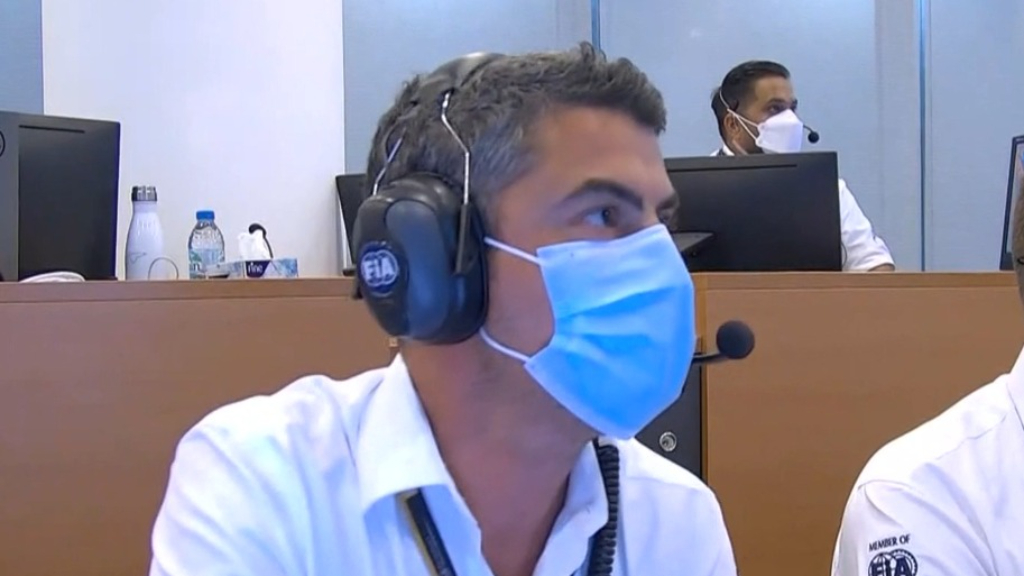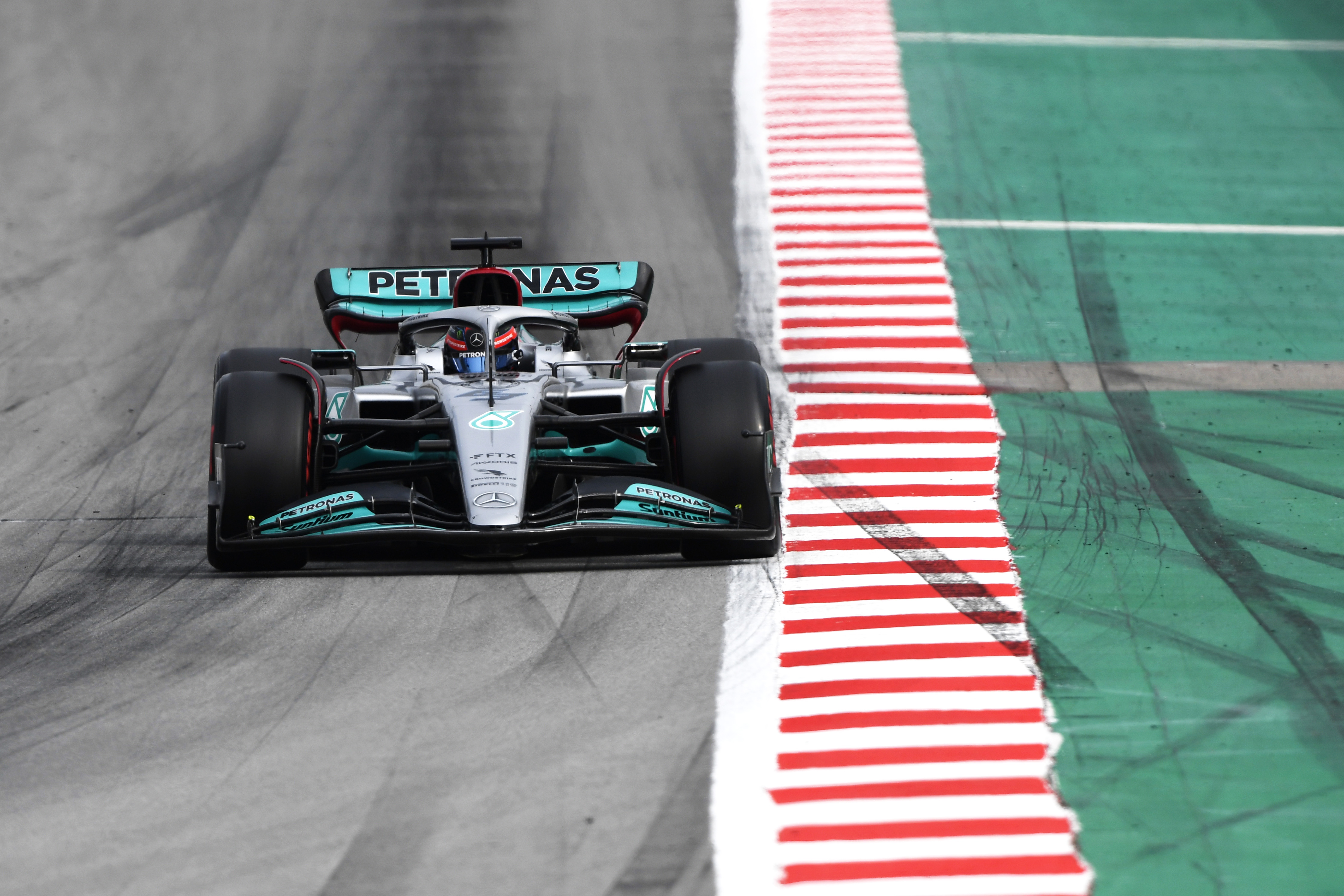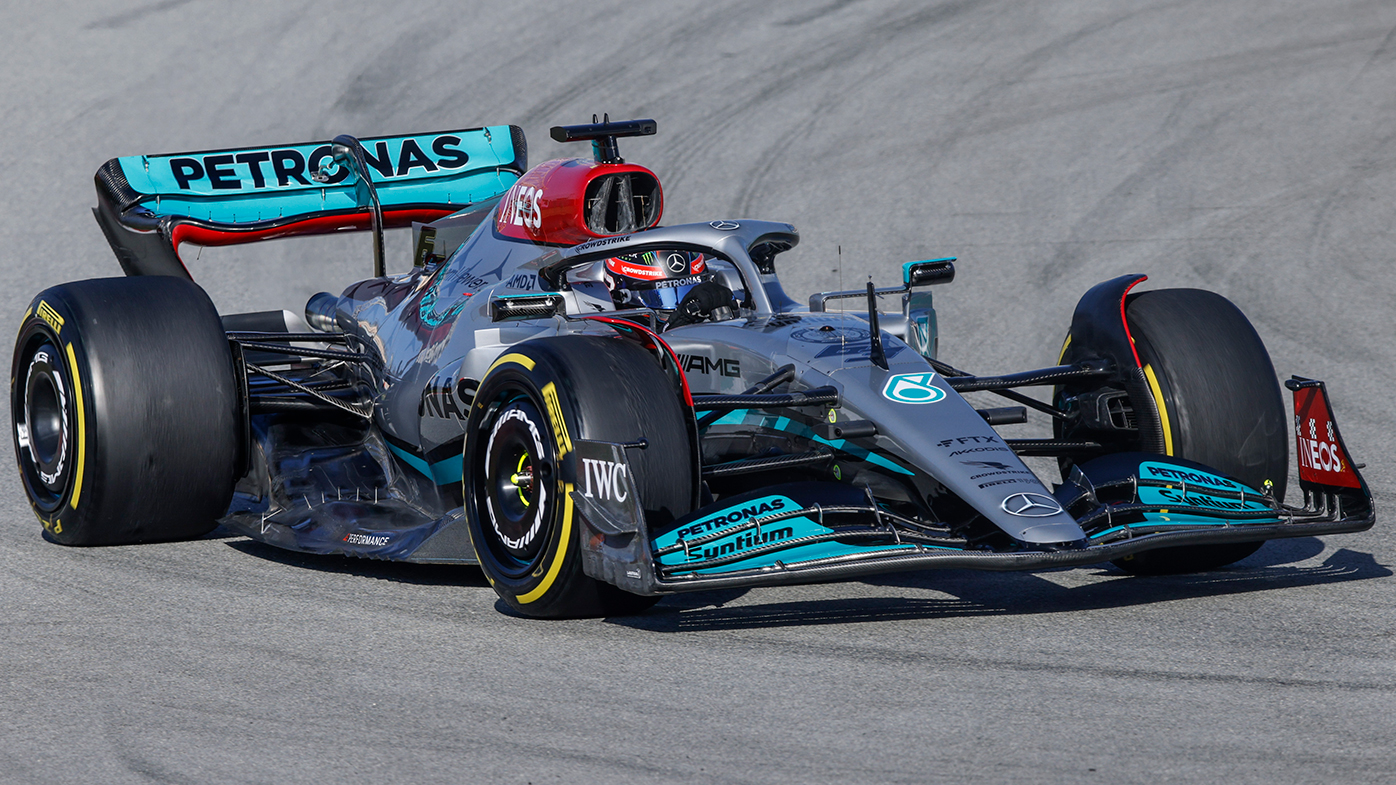Newly-minted Mercedes driver George Russell has proposed a solution to the teething problem hindering the new generation of Formula 1 cars.
During last week’s pre-season shakedown in Barcelona, an unforeseen issue presented itself among the fleet of 2022 challenges.
The occurrence – dubbed porpoising – was observed as the cars began violently bouncing as they raced down the straights.
READ MORE: Ukrainian tennis star Svitolina says she won’t face Russian
READ MORE: Mark Taylor laughs away Shane Warne’s head-spinning claim
READ MORE: Ashton Agar the subject of a death threat on eve of Pakistan series
Porpoising is trigged by the aero properties of the cars’ new designs combined with ground effect. It occurs when downforce pushes the car into the track at high speed before the airflow suddenly stalls causing the car to rise back up.
This cycle repeats itself down the length of the straight due to the continuous loss of load.
With the teams now back at their factories to find a fix ahead of the season-opener in Bahrain later this month, Russell has proposed a potential long-term solution.
Speaking to the porpoising problem, which was highlighted in a video of Charles Leclerc’s Ferrari suffering the behaviour posted to F1’s social media, Russell suggested the re-introduction of active suspension in F1.
“We just saw with the Charles video just how bad it was for them,” he said. “So, I think we will need to find a solution.
https://twitter.com/F1/status/1496888665431326726?ref_src=twsrc%5Etfw
“I guess if active suspension was there, it could be solved with a click of your fingers. And the cars would naturally be a hell of a lot faster if we had that.
“I’m sure all the teams are capable of that, so that could be one for the future. But let’s see in Bahrain. I’m sure the teams will come up with some smart ideas around this issue.”
However, active suspension was banned in F1 ahead of the 1994 season, as part of a scheme to cut back on driver aids in the sport.
Russell believes that active suspension could be a good compromise for the FIA as it would also quicken lap times.
“I think it’s clear if we had active suspension, the cars will be a hell of a lot faster for the same aerodynamic surfaces, because you’d be able to optimise the ride heights for every corner speed and optimise it down the straight for the least amount of drag,” he said.
“So, it’s an easy way to make the cars go faster. And if you think of a safety aspect, then potentially [it’s an improvement]. I’m sure there are more limitations. I’m not an engineer. But we wouldn’t have this issue down the straight, that’s for sure.”
McLaren technical director James Key agrees that active suspension could benefit F1 in the long term. However, he has his concerns.
“Active would help in two ways,” he said.
“You could aim to try and keep around your peak aero performance for more of the lap, which is a lovely place to be if you can do it.
“But also it could, in some way, possibly counter some of the natural frequencies hitting the chassis as well. So, again, it wouldn’t eradicate the problem, the physics are still there, but it would certainly help manage it.
“As a technical director, I’d love to see the return of active suspension personally. But, with the cost cap, it’s not the best project to be doing.”
For a daily dose of the best of the breaking news and exclusive content from Wide World of Sports, subscribe to our newsletter by clicking here!


